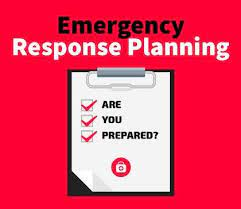When it comes to toddlers, their boundless energy and curiosity often lead them to engage in various activities. One common activity that many toddlers enjoy is spinning. You may have witnessed your little one spinning around in circles, seemingly endless energy fueling their delightful laughter. But as a parent, you may wonder, can a toddler spin too much? In this article, we will explore the effects of excessive spinning on toddlers and delve into the potential benefits and risks associated with this activity.
The Joy of Spinning
Spinning is a natural and instinctive behavior for children, as it allows them to explore their physical abilities and the world around them. It can be a thrilling and exhilarating experience for toddlers, stimulating their senses and providing a sense of joy and wonderment. Discover why is my toddler spinning in circles.
The Benefits of Spinning
Spinning offers several benefits for toddlers’ overall development:
- Vestibular Stimulation: Spinning stimulates the vestibular system, which is responsible for maintaining balance and spatial orientation. This sensory input helps strengthen the inner ear and promotes a sense of balance in toddlers.
- Motor Skills Enhancement: As toddlers spin, they engage various muscle groups, improving their coordination, gross motor skills, and body awareness. This activity can contribute to their overall physical development.
- Cognitive Stimulation: Spinning also stimulates cognitive development by enhancing spatial awareness, visual tracking, and concentration. It encourages the brain to process multiple sensory inputs simultaneously, fostering cognitive growth in toddlers.
Recognizing Limits and Safety Measures
While spinning can be an enjoyable and beneficial activity for toddlers, it’s essential to recognize and respect their limits. Excessive or prolonged spinning may lead to certain risks and discomfort. Therefore, it is important to implement appropriate safety measures to ensure the well-being of your child.
- Monitoring Duration: Pay attention to the duration of spinning sessions. It is advisable to limit spinning activities to short durations, allowing for breaks in between to prevent fatigue and dizziness.
- Environmental Safety: Ensure a safe and spacious environment for spinning, free from sharp edges or objects that could cause accidents or injuries. Provide adequate supervision during spinning activities to prevent falls or collisions.
- Individual Sensitivities: Every child is unique, and their tolerance for spinning may vary. Observe your toddler’s reactions and adjust the intensity and frequency of spinning based on their comfort level. If your child shows signs of discomfort, such as dizziness, nausea, or excessive fatigue, it’s important to reduce or discontinue spinning activities.
Potential Risks and Precautions
While spinning can offer benefits, it’s crucial to be aware of potential risks and take necessary precautions to ensure the safety of your toddler.
Motion Sickness
Some toddlers may experience motion sickness as a result of excessive spinning. Motion sickness can manifest as dizziness, nausea, and in rare cases, vomiting. If your child exhibits these symptoms, it’s essential to reduce spinning activities and provide a calm environment for recovery.
Risk of Falls and Injuries
As with any physical activity, there is a risk of falls and injuries during spinning. To minimize these risks:
- Ensure the spinning area is clear of obstacles or hazards.
- Choose appropriate spinning surfaces, such as grass or carpet, to provide a softer landing in case of falls.
- Encourage your child to wear comfortable and non-slip footwear to maintain stability during spinning.
Impact on Inner Ear
Excessive spinning can potentially affect the delicate structures of the inner ear, leading to temporary disorientation or imbalance. To mitigate this risk:
- Encourage breaks between spinning sessions to allow the inner ear to recalibrate.
- If your child experiences prolonged or recurring balance issues, consult a pediatrician or an otolaryngologist for further evaluation.
Moderation is Key
While spinning can be an exciting activity for toddlers, moderation is key to ensure their well-being and safety. By being mindful of your child’s comfort and implementing appropriate safety measures, you can create an enjoyable and risk-free spinning experience.
Remember, each child is unique, and their tolerance for spinning may vary. Pay attention to their cues, and always prioritize their safety and comfort. By striking a balance between fun and safety, you can foster a positive and enriching spinning experience for your toddler.
Conclusion
Spinning can be a delightful and stimulating activity for toddlers, offering various benefits for their physical and cognitive development. However, it is important to recognize the limits and implement safety measures to prevent potential risks. By maintaining moderation, monitoring your child’s reactions, and ensuring a safe environment, you can create a positive and enjoyable spinning experience for your little one. Embrace their natural inclination to explore the world through spinning, and cherish the moments of laughter and discovery it brings.
So, the next time your toddler wants to spin around like a whirlwind, embrace their joy and provide a safe and supportive space for their delightful exploration.









+ There are no comments
Add yours